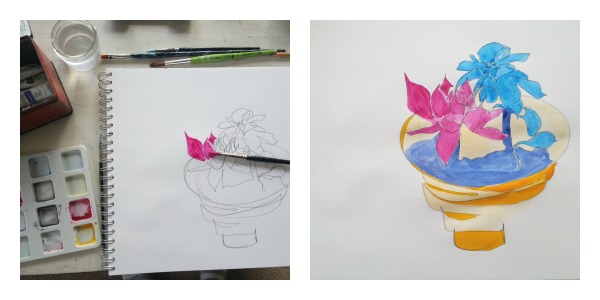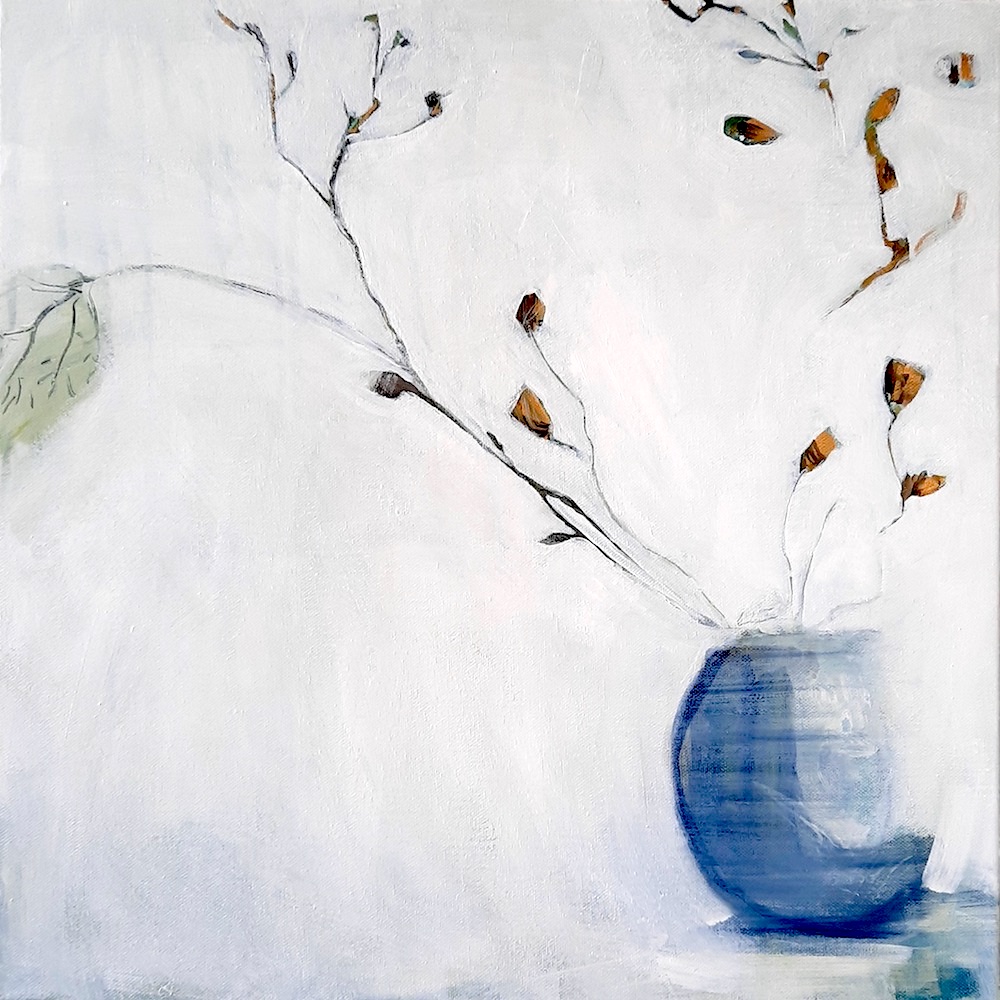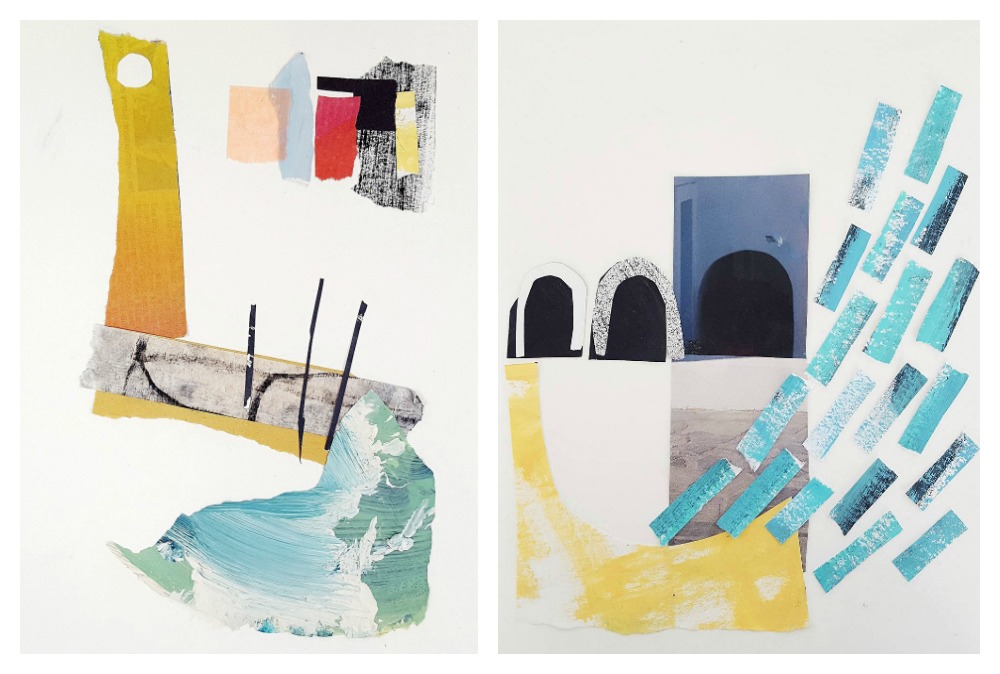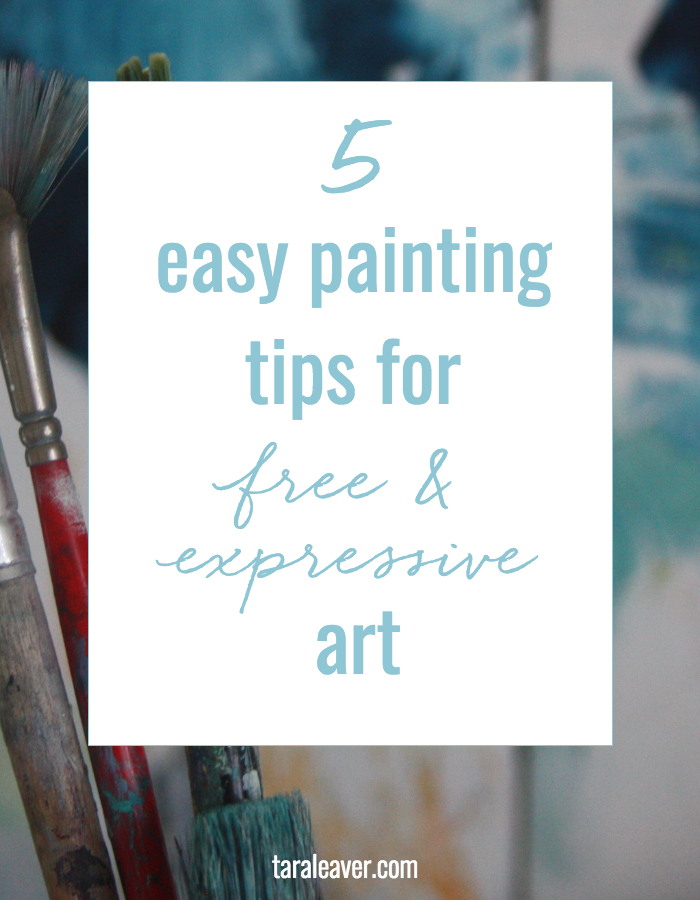You know that thing that happens sometimes when you’re making art and you end up getting incrementally tighter and more controlled and trying to make it ‘right’ or ‘perfect’, even against your own desires and intention?
Over the years it has become clear to me that this is a major stumbling block for many of us, myself included {although less so these days, which just goes to show these things can be changed!}.
It’s usually a habit borne of the classroom, where ‘art’ meant drawing or painting something representationally, and, more to the point, accurately.
The measure of how ‘good’ you were at art was how well you could make a realistic likeness.
But that’s so limiting!
And it’s by no means the only way to make art, otherwise Fauvism, Surrealism, and Abstract Expressionism {to name a few} wouldn’t have been such major movements in art history.
This idea that to be good at art we must be good at drawing a likeness only has validity in certain circles, and quite honestly, for me the purpose of art is not to be ‘good’ at it; it’s about expressing yourself freely and from the core of who you are.
And for many of us that has nothing to do with realism.
But it can be hard to break old habits and let go of ‘this is how it’s done’.
So we need to create doorways into making art that are easily accessible and easy to go through.
What can we do to create such doorways from art that’s tight, controlled, and focused on accuracy, into art that’s wild, loose, and demonstrates the artist’s personal vocabulary?
Lots of things, actually, but here are a few that are easier to quantify than others, and so easier to focus on and use effectively.
And we like easy and effective. 😊
So here are your five easy painting tips for the day.
Each comes with an action to take and an artist or two to check out for inspiration. Have at it!
1. Blind contour drawing
![]() If you’ve been hanging around here a while, this won’t be news to you. I’m a huge fan of blind contour drawing as a ‘way in’. It helps us loosen up, drop the perfectionism, and just enjoy the pleasure of making marks and learning to see.
If you’ve been hanging around here a while, this won’t be news to you. I’m a huge fan of blind contour drawing as a ‘way in’. It helps us loosen up, drop the perfectionism, and just enjoy the pleasure of making marks and learning to see.
Try this: For more on the whys and hows of blind contour, see this post.
Or simply try it yourself right now – one mark making tool, one piece of paper, one subject, and draw it slowly without lifting your tool from the paper or looking at anything but the subject. Expect it to be wonderfully imperfect and to feel quite freeing. 😊
Google these artists as a reference: Egon Schiele, Ellsworth Kelly {plant drawings}

An example of a blind contour drawing of a succulent, with colour
2. Lost and found lines
![]() Lost and found lines simply means that your lines vary in strength and visibility.
Lost and found lines simply means that your lines vary in strength and visibility.
I recommend not drawing lines around absolutely everything, especially if there’s no variation in width or pressure. Line is a wonderful and exciting tool; the more you experiment with what it can do the more interesting your work will be.
Try this: Use line for only part of an object, or paint over parts of lines you’ve already put in.
Artist reference: Melinda Cootsona, Henri Matisse

Lost and found lines can be seen in this painting I made for the Into Nature course
3. Non local colour
![]() Dare to move away from the expected colours.
Dare to move away from the expected colours.
If you’re going for a landscape, let the sky be green and the ground be layers of rich blues and pinks. The minute you let go of what it’s ‘supposed’ to look like, you can start to find out what YOU want it to look like.
Furthermore, this approach helps to sidestep perfectionism; if you’re not trying to recreate a blue sky with white clouds, you can’t get it ‘wrong’. 🙂
Try this: Start a new painting/sketchbook piece with a palette inspired by something ‘unnatural’, for example an interior shot from Pinterest, Instagram or a magazine. Then apply it to, for example, a still life like a pot plant, or perhaps a self portrait.
Artist reference: The Fauvists, Tracy Waite, Charlotte Evans

Three abstract landscape paintings of mine using non local colour
4. Leave things out
![]() Be suggestive! The beauty of painting is you don’t have to spell everything out to the viewer.
Be suggestive! The beauty of painting is you don’t have to spell everything out to the viewer.
In fact it’s far better to leave questions unanswered and allow the viewer to fill in the blanks themselves.
The brain does this naturally, which means the viewer becomes part of the experience, bringing the work full circle.
Try this: In your next representational painting or drawing, try leaving out or removing at least a third of what you’d normally put in. Use larger areas of colour to suggest what might be going on instead of drawing every last detail.
Artist reference: Liz Gribin

Two collages by me in which I was experimenting with what I could leave out and still capture the essence of a place.
5. Allow mistakes to evolve
![]() Use ‘mistakes’ to your advantage!
Use ‘mistakes’ to your advantage!
If you do something you hate, don’t jump to the conclusion that the painting is ruined; simply paint, redraw, gesso, or collage over parts of it, or cut it up and remake it. The overall outcome will be richer for it.
You can also take advantage of rubbed out lines or partially removed areas as revealing the evolution and history of the piece; a painting can tell a story without having any recognisable images, even if it’s simply its own story of coming into being.
Try this: Find an old painting that you never finished because it didn’t work out {I know you have at least one!}, and use it to experiment with removing and replacing certain areas.
Could the entire thing act as a background for something new? Would smudging paint over some of the most unpleasing areas and then drawing into them bring fresh energy to it? Since it’s old and abandoned, if it doesn’t work out nothing is lost.
Artist reference: any 2D mixed media artist!
Obviously there are many more things we can do – please share yours in the comments!








This is such a great list!!! Super blogpost ! I will write these down in my journal so that I can refer to them. Thank you.
Glad you found it helpful Aino!
All good ideas, Tara…thanks for posting this list. Another idea that I love to use which is quite free-ing is to turn my painting and resource photo upside down; and paint away… it especially helps me if I’m stuck on perspecitive or figurative work.
Yes that’s a good one – I always turn my paintings too. 🙂
I have been feeling a bit ” stuck” lately in regards to my style so I’ve been reading everything that I can find on the subject! Most have been very vague and general until I found this! It is exactly what I was looking for! I feel very inspired again! Thank you so so much!
Renee that’s great, I’m so pleased for both of us! 😉 Always happy to be helpful. If you have any questions come up, let me know.
Hi Tara, I’m an artist and a blogger and I find your tips very inspirational. Would you mind if I share some of your info from your blogs and provide your name/website as credit. I am just starting and would like to include info about art from both a viewer, artist, buyer and tourist prospective. But I do have several artists currently on the site that would love to hear some of your tips. Let me know what you think. Thanks!
Hi Betty – of course please share anything you think will be useful, and I appreciate the offer of credit too. 🙂